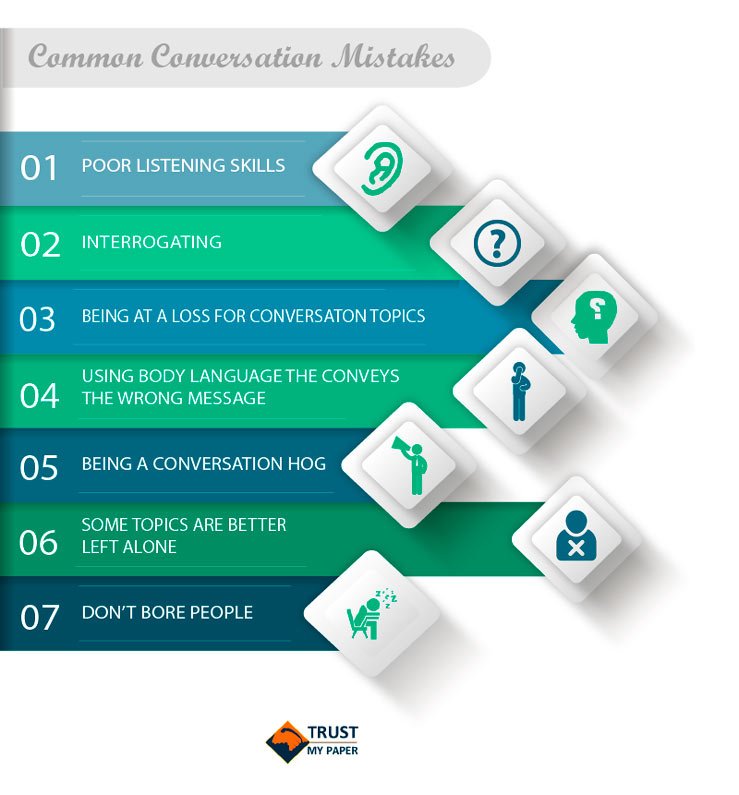The Unrivaled Guide to Developing Effective Communication Skills (QUIZ)

January 14, 2016
Introduction
Communication is the base for all that happens. Think about it. Teaching and learning, decisions, solutions, laws, relationships – all occur with the realm of communication. Even though we live in a world of texting, email, Twitter, and such, we do still have to communicate effectively. We need to make sure that what we are saying is exactly what we mean to say and that the receivers of our communication understand what we are saying. If communication skills are not mastered, both sending and receiving, then an individual’s personal and professional life can suffer. Wars have been fought because parties have refused to communicate; a leading cause of divorce is failure in communication; businesses fail because the key players don’t communicate effectively with one another or with their clients/customers.
“The biggest problem with communication is the illusion that it has taken place.”
George Bernard Shaw
You don’t want “wars,” either professional or personal. They are not pretty. This guide has been put together so that you may review, enhance, and fine tune your communication skills and avoid the bad things that happen when communication goes awry.
Chapter 1: Learn to Listen

Everyone as a child has played this listening game. We sat in a large circle. A secret was whispered into the ear of the first person. That person then whispered the secret to the next, and so on around the entire circle. The last person to receive the message then publicly announced the secret. Everyone always laughed, because of the startling difference between the original message and how it had changed as it made its way around the circle. This is used to demonstrate that our listening skills are just not that good. Learning to listen takes a commitment of time and attention. We tend not to have a lot of time. But taking the time to really listen prevents misunderstandings, conflicts, mistakes, frustrations, and hurt feelings. It can prevent waste, loss and harm. There are ten techniques that you can implement easily and right now to become a better listener.
Technique 1: Look at the Speaker and Make Eye Contact
It has happened to everyone at some point. A teenager is rolling his/her eyes and looking anywhere but at his/her parent while that parent is trying to explain or correct; a co-worker, boss, or supervisor is focused on something else while you are talking to them; a spouse or partner does not look up from his/her computer screen while you are trying to make a point or get some input. Remember how you felt? Angry? Frustrated? Discounted? Unimportant? Don’t let someone talking to you feel that way. Even if the speaker doesn’t always look you in the eye (sometimes that speaker may be shy or embarrassed) you be certain to look at that person, stop what you’re doing, and give that speaker your full attention. It not only shows the speaker that s/he has value to you, but it ensures that you are focused and going to actually hear what is being said.
Technique 2: Stay Focused but not “Stiff”
To really be attentive, you have to be mentally “present,” that is, you cannot be thinking about other things, daydreaming, or letting other issues, problems or background activity/noise distract you. In your attentiveness, don’t sit or stand rigidly and stare. This is a conversation, and the speaker will feel more comfortable if you present a moderately relaxed persona.
Technique 3: Watch those Prejudices, Biases and Judgements
When we have strong opinions or beliefs and someone is speaking to us from another position, it is easy to discount what is being said with such thoughts as, “He is wrong about that,” or “I don’t agree at all,” or “That is a stupid move.” You are not a good listener when you criticize or judge – you are having a conversation with yourself not with the speaker.
By the same token, don’t jump in and try to finish the speaker’s thought – coming to conclusions ahead of time tells the speaker that you have no interest in what s/he has to offer. And you may not know where the speaker is “headed” at all if you do this – you are only following where your train of thought it taking you. This is a hard habit to break, but if you continue to do this, speakers will stop trying to communicate with you in person. They will just send you emails and texts instead.
Technique 4: Stop Planning What You are Going to Say Next
One of the biggest mistakes you can make, especially when a conversation involves a discussion, heated or not, in which both speaker and listener have points to make and want their points to be heard. They don’t want to forget them. So, as they are supposed to be listening, instead, they are planning in their heads what they are going to say next. No meaningful discussion can occur in these circumstances.
Technique 5: Don’t Interrupt – ever.
When you interrupt, the speaker loses his/her train of thought. As well, it sends a signal that what s/he has to say is just not important enough for you to listen all the way through. This is such a common occurrence on TV today, and children grow up thinking it is normal and okay. It’s not. Interrupting sends the following messages to the speaker:
- You are not as important as me
- My thoughts and words are more important than yours – they are better, right, and more meaningful
- This is a competition and I am trying to win
You may be a more agile thinker and speaker. You may be listening to someone who is not. You need to slow down and allow that speaker to formulate his/her thoughts and get those thoughts out.
Technique 6: Don’t jump in with your solutions.
Sometimes, people just need to verbalize problems and issues, because it helps think them through and come up with solutions. Unless you are asked for your solutions, don’t give them. If you are asked or if you believe you have a great solution, wait. Hear the speaker out first. You may not have every angle of the issue or problem until it is fully explained.
Technique 7: Watch how and when you ask questions.
It’s a good thing to ask questions. It shows the speaker that you are listening and you either need clarification or more information. But be careful not to interrupt the speaker’s train of thought by asking them right in the middle of the speaking. Wait for a break or a pause. Then as for them to repeat or to clarify. And, once that has been done, repeat what was said in your own words and look for confirmation that you “heard” the person correctly.
Don’t ask questions that will get the speaker off track. This is something that occurs so commonly. A friend is filling you in on a new restaurant he has found and is describing the great food and atmosphere. All of a sudden you ask if he has been to another new restaurant that you know about. Immediately, the conversation has been changed, and it now has nothing to do with the original intent of the speaker.
Technique 8: Practice Empathy
Empathy is the ability to put yourself in someone else’s shoes – to understand his/her joy, frustration, sadness, fears etc. You may not be able to muster up those same feelings (e.g., it may be difficult for you to experience the same fear if you don’t actually have it), but you have to dignify that person’s emotions in the responses that you have. While that person is speaking, try to show your empathy with non-verbal cues – facial expressions, nodding your head, and so forth. A speaker is far more willing to be totally honest and open when s/eh feels that the listener “gets it.”
Technique 9: Give Feedback in the Right Way
You don’t have to interrupt to give feedback. You can nod your head, say things like, “uh-huh,” and give other non-verbal messages that you understand. If you are not understanding what is begin said, wait for a pause. Then engage in what is called “active listening.” Say things like “What I hear you saying is…” and make sure that you have “heard” correctly. A lot of misunderstanding can be avoided if you do this as a listener. Often, a speaker won’t be clear. S/he understands something so well that important detail may be left out – detail that creates confusion for the listener. As a listener, you do have an obligation to make sure that you have really understood what is said.
Technique 10: Watch for Non-Verbal Messages
Tone of voice is often a “dead giveaway.” You can pick up anger, frustration, fear, sarcasm, happiness and more just from that. And when you are in the physical presence of the speaker, watch for body language. Arms crossed is usually a sign of rigidity; slumped shoulders may be sending a message of unhappiness or disinterest; fidgeting is a sign of nervousness or anxiety; hands and arms are used to signify importance; sitting up and leaning forward is generally a sign of enthusiasm. You can learn a lot by watching for these things.
A Final Note: when you finish a conversation with someone, and you have done a lot of listening, it helps to give a verbal summary at the end. If there have been mis-understandings or if some important information has been forgotten, this is the time when it can be clarified or repeated again.
Chapter 2: Verbal Communication

Most people have formal coursework that involves verbal communication. College require an oral communications class; in many major fields of study, there are courses that require oral presentations. The more experience someone has with oral presentations, speeches, debates, and panel discussions, the better communicator they become. What is not usually “covered” in this coursework is the less formal verbal communication situations that occur commonly in the workplace, in semi-social situations, and in our personal lives – meetings, phone calls, discussions, etc. We want to be clear and articulate; we want to make ourselves understood; and we want to fine tune our listening skills, so that we really “hear” what others are saying. Here are 8 tips for getting better at this whole communication thing.
- Read A Lot: The more you read, the more you pick up on good ways of communicating. For example, suppose you read several news articles every day. You will see how a journalist presents the critical information that is necessary for a news story. Words are not wasted. If you can adopt these techniques when you have to provide clear informational communication to others, you will be better at it Reading also improves your vocabulary and correct grammar usage – this can impress listeners, and they are more apt to see you as someone who should be listened to.
- Think About Economy of Words: Don’t fill your communication with lots of verbiage – you will lose your listeners. By the same token, don’t fill your speech with jargon that listeners won’t understand. Being too wordy bores listeners, and you lose credibility.
- Prepare, if Only Informally: When you know that meeting is coming up, even if it is to be informal, you probably have a pretty good idea of the topics for discussion. Look over the agenda and think of what you want to contribute – thinking about what you want to say in advance helps you fine-tune your thoughts and allows you to sound credible during the meeting.
- Show Interest and Listen: When you listen first, you get a much clearer idea of what’s on the minds of other speakers. Listening carefully helps you formulate what you want to contribute or to ask the right questions. When you physical show interest in what others are saying, you are also building rapport with them – they see you as someone who respects what they have to say.
- Watch Your Non-Verbal Communication: You send many messages with your tone of voice and body language. You may think that others in your meeting are kind of full of “hot air,” but if you adopt a sarcastic tone of voice or if your body language shows that you are bored (leaning back, failing to make eye contact as you speak, etc.), or angry (arms crossed, pushed back from the table), then listeners are less apt to focus on what you are saying.
- Be Truthful: Watching political campaigning is always interesting. Candidates promise all sorts of things they know they cannot really deliver, just to get votes. If you are communicating from a leadership position, don’t do this. People won’t trust what you say in the future. And if you do not know the answer to a question, say so, but state you will get that answer.
- Watch Your Audience for Clues: You can tell if your listeners are receiving and understanding what you are saying by watching their facial expressions and their body language. And when someone else is speaking, give those clues to that person too. Ask for questions when you finish.
- Get into the Listener’s Head: You may have a great understanding and great knowledge to impart. However, be mindful that your listener(s) many not have this same knowledge and understanding – you may have to simplify and provide more detail, depending upon the audience.
There are lots of other things you can do to improve your verbal communication skills. Do some research on your own and find some activities that you personally find valuable.
Chapter 3: Non-Verbal Communication

Our bodies speak volumes when we communicate verbally. We use different tones of voice; we use facial expressions, we use our arms and hands in gesturing; we use our eyes and our posture. All of these things make what we are saying more meaningful to the listener.
And as we listen, still the non-verbal communication continues. We are watching the body of the speaker for messages; and we are still sending non-verbal messages as we listen.
Non-verbal cues can either reinforce what is being said or belie it, and it is those cues that a listener believes. They are natural and truthful, no matter what is being said. When your non-verbal messages match the words, all is well. When they do not, the listener loses trust or becomes confused. So, if you really want to improve your verbal communication skills (speaking or listening), you need to become more aware of those non-verbal communicators. In fact, they can do 5 things:
- They can accent or reinforce a verbal message. Strong hand gestures, for example relay the importance of something being said
- They may contradict a verbal message. If a speaker’s message is supposed to have force, for example, but it is conveyed in a low voice tone, with slumped shoulders and no eye contact, then the message is that what is being said is anything but important.
- They can serve to repeat a message being spoken verbally. If a message is supposed to have force, and it is conveyed in a strong voice with a straight posture and eye contact, then that body language repeats the “force.”
- They can serve to verify a verbal message. A parent who provides a hug to a child while giving a verbal message; a co-worker who places his hand on the arm of another as he expresses sympathy of a family loss – these add “truth” to what is being said.
- They can be a substitution for a verbal message. Head nodding, for example, tells a speaker that the listener is understanding or agrees. The “look” that kids get from their parents or teachers can say volumes.
Seven Types of Non-Verbal Communication

When you speak or listen, there are 7 non-verbal cues you are continuously relaying to others.
- Facial Expressions: These are “universal” forms of communication – we all know what happiness and joy “look” like on a face; likewise we know what anger, shock, disbelief, fear and unhappiness “look” like.
- Posture and Other Body Movements: When there is interest or excitement, the body is straighter; if in a sitting position, it moves forward; if walking, it is brisk. Likewise, when there is dis-interest, posture is not straight, the head is not held up, and the walk is slower and less defined.
- Eye Contact: Just making and keeping eye contact communicates interest. And the eyes can express empathy, anger, hostility, fear and many other emotions. Avoiding eye contact during communication also sends strong messages – lack of belief is what you are saying, for example.
- Hand and Arm Gestures: It is a common joke that Italians only speak with their hands and arms. And we all know of people who use these commonly to add emphasis to what they are saying. These vary in different cultures, however, so it is important to be aware of how we are using them.
- Space: We all have our “personal space” – an invisible bubble around us that we don’t want people invading unless invited in. It makes us uncomfortable when that “space” is entered. This is why teachers, when they wish to get a student “back on track” will often silently move to that student and stand very close. The student will often change his/her behavior in order to get the teacher to back away. Space can be used in adult communication as well, and it does send non-verbal messages.
- Touch: A strong handshake says a great deal; so does a pat on the back or a hand on a shoulder. People can communicate strength or weakness, support or lack of it, agreement, praise, and so many things with their touch.
- Voice Tone and Speed: Rapid or slow deliberate speech say two different things. So does volume. And verbal emphasis on certain words is important. Voice tones can communicate hostility, disgust, sarcasm, confidence, empathy and agreement.
Your non-verbal messages are quite automatic. You have developed habits of non-verbal communication over the years. They are now a part of your almost unconscious, natural communication, and, as you communicate, they just naturally assert themselves. This is why non-verbal cues are far more truthful than what may be coming out of your mouth.
Fine-Tuning Your Non-Verbal Cues and Learning to Read Those of Others
Non-verbal cues impact how others perceive you and what they think of you. People will learn to trust or not to trust, to respect or not to, based upon whether your non-verbal behaviors match your words or not. As well, non-verbal communication can demonstrate aggression, fear, lack of confidence, or dishonesty.
Part of fine-tuning your non-verbal communication is knowing your audience. The other part is practice, to change habits that are quite ingrained.
Knowing Your Audience
Sometimes, it is not possible to have a full understanding of your listener. You may not know the person or people with whom you are communicating. But when you do know your listener, what you say and the non-verbal communication you present as a speaker or listener is critical. If your listener is a bit timid and lacking in confidence, for example, coming on with aggressive communication and body language will destroy the communication event. By the same token, if you know that your listener is aggressive, energetic and confident, then your non-verbal communication can also reflect that.
You will need to practice the non-verbal cues you give, so that you become more of a “situational” communicator. This is not an easy skill to master, and it will take time. However, if you can become sensitive to the needs of those with whom you communicate, you are more apt to get what you need out of a communication event. And those needs involve your non-verbal behaviors and cues, not just what you say or what you hear.
Changing Your Habits
Very smart and very dedicated people often struggle in their communication efforts. And sometimes, they do not even realize that their non-verbal cues are sending the wrong messages. You have to dump old habits and practice using and interpreting non-verbal messages. Here are some important tips to help you do that.
- Communication can be formal, and there is plenty of time to prepare. Or, it can be informal and not planned. You have to be prepared for both. Often, if communication is in the moment it can create stress, and it is easy to revert to your old habits of non-verbal messaging. Before you begin to communicate in these stressful settings, take a moment or two and breathe, relax, and gather your thoughts. Pauses in communication are just fine.
- Get a handle on your own emotions, but also get a handle on the emotions of others. You can do this by reading their non-verbal behaviors. If you can read their non-verbal messages, you will know how to temper your reactions and your responses.
- Generate trust by making sure that your non-verbal behaviors match what you are saying. Taking the time to pause and gather your thoughts and to become consciously aware of your non-verbal cues make you the mature communicator.
How to Better Read Non-verbal Communication from Others
- Be mindful of contradictory messages. If a person is communicating one thing verbally but the body language is telling you something different, then you cannot trust what is being said. For example, if a co-worker is stating that s/he is really enthusiastic about a project, but the body language i not saying that, then the enthusiasm is really not there.
- Take non-verbal communication as a “whole” rather than as specific details. At the end of a communication event, what is our overall impression from body language?
- Look for the following specifically:
- Is there good eye contact during the event?
- Watch facial expressions – is there emotion present or not? What are those emotions conveying?
- Listen to tone of voice – is the person excited, warm, confident or shy, lacking in confidence, or angry. These clues will tell you what you need to communicate in response.
- Look for signs from physical posture and gestures. These will tell you if there is enthusiasm, complacency or indifference.
Paying attention to all of these things will drive what you ultimately say and your own non-verbal behaviors.
Chapter 4: Assertiveness in Communication

People who practice assertion in communication are those who confront issues and problems in a direct manner. Assertiveness is not to be confused with aggression and is certainly the opposite of passive-aggressive behavior as well. It is healthy communication in that it neither “runs over” others nor does it allow others to “run over” you. Here are the many benefits of being assertive in your communication:
- You earn the respect of others. They understand that you will be open and honest
- You are able to communicate your opinions and your feelings without being highly emotional and irrational
- You will be able to maintain far more honest relationships with others, both in personal and professional settings
- You will improve your self-confidence
How to Become More Assertive
We tend to communicate in a style that we have learned over time, and if that style is not assertive, then we have re-learning to do. For example, if we have learned a passive-aggressive style, we tend to say “yes” when we do not want to; we tend not to express our opinions and feelings openly, but then we find ourselves resentful and angry. To become more assertive, you may want to look at the following strategies for doing so:
- Evaluate our own style. Do you calmly and openly express your opinions? Do you fail to speak up when too many demands are made upon you? Do you find yourself blaming others of judging them when your plate is too full? If you are answering yes to these things, then you need to become more assertive.
- Disagree using “I” rather than “you” statement. There is a big difference between saying, “You are really off base” and “I believe that this is wrong.” In this way, you are not directly attacking the person with whom you disagree.
- Say “no” when you need to. This may take some practice, but it is necessary practice. You can learn to say the word firmly but without anger and to explain your reasons without emotion.
- Practice what you will say in certain scenarios that you typically find yourself. Speak out loud to yourself. Make sure that you are allowing anger or resentment to enter our speaking. You need to be rational and calm as you present your opinions or views, but be firm as well. Get a “buddy” with whom you can practice and get feedback.
- Assertive communication requires confident body language. And confidence can be projected with body language. If you attempt to be assertive and your posture is not strong, your walk is not brisk, and you cannot make eye contact, then no one will believe that you mean what you say.
- Remove emotion from your communication. The more emotional you become, the less credible you become. There is nothing wrong in postponing a conversation until you are less emotional. This will allow you to gain perspective, form your words and present a rational point of view.
- Start with small tings. Instead of just going along with a few friends to a restaurant they choose, state your preference and why you wish to go somewhere else. Say “no” if you don’t want to go see a particular movie. You will gradually gain confidence in your ability to be assertive and can move on to bigger situations.
Be Patient with Yourself
Becoming assertive in communication takes time and practice. Allow yourself time to develop this skill, just as you allowed yourself time to learn anything else. Consider yourself as a student with a curriculum to master. You’ll get there. If you are not making good progress, there are assertiveness training classes that will help.
Chapter 5: Public Speaking

Good teachers and actors are, first and foremost, good public speakers. They can capture an audience, keep interest, and “sell” their products. Public speaking actually occurs in a wide variety of environments. Thus, a job interview is a type of public speaking; presenting a proposal to investors is public speaking; even a presentation at work in which the audience may include superiors whom you do not know well is public speaking.
To make your speaking dreads less dreadful and perhaps enjoyable, here are 9 strategies and tips that will help you do your best and impress your audience.
- Preparation
Good teachers do not go into a classroom without great preparation for the lesson they will teach. Likewise, no actor goes onto stage without hours upon hours of preparation for his role. You have to look at public speaking in the same light. You have an audience waiting to be informed, inspired, or entertained, and you are the main act.
As you prepare your speech or presentation, divide it into sections. Inexperienced speech makers will probably want to write out everything that they plan to say; more experienced speakers who know their subject really well usually prepare and outline with bullet points that need to be covered. However you need to do it, make sure that the notes you take with you are divided with sections clearly marked. This way, if you should lose your train of thought you at least can find the section. The key, of course, is to know your material so well that you can get yourself back on track easily.
- Practice
The most important reason for practicing is to make yourself as comfortable with your content, your intonations, your body language, and more. You want to appear natural with your gestures, your pauses, your points of emphasis. You also want to practice speaking a bit slower than normal – in front of a real audience you will naturally speed up, due to some nervousness. Enlist the help of a friend to listen to your speech and give you feedback.
- Drink Lots of Water Before Your Speech
“Dry mouth” is a common condition when people are nervous and trying to speak. And it’s something you definitely don’t want. Your mouth will not let you enunciate well. So, drink before you go on, and keep a bottle of water close by. There is nothing wrong with taking short break for a bit of water during a speech. It is common and expected.
- Find What Relaxes You/ Warm-Up
Before your speech, the worst thing you can do is go over and over that speech. You have rehearsed and you know it. Before the speech, you need to do what relaxes you best – read a book, play a game, do some Yoga, meditate, listen to music. This will keep you from obsessing about your nervousness. And warming up your voice will go a long way to countering nervousness too. Try humming a few bar of your favorite song before you go on, if you are in a place where you can do so.
- Make Certain that You Rest Before Your Speech
It goes without saying that you should get a good night’s rest before the day of a speech. If the speech is at night, then take a nap in the afternoon.
- Dress Carefully and Correctly
If you understand the nature of the event and your audience, you will have no difficulty knowing the style of dress – formal, semi-formal, business casual, or casual. A good rule is to dress suitably for the occasion, but be impeccable no matter what that dress may be. If you dress in something you know you look good in, and you feel good in, you will have greater confidence.
- Watch Your Articulation
In the nervousness of speaking, it is easy to become a bit mush-mouthed. You’ve heard people speak like this before. It’s really hard to understand them and pretty soon you tune them out. You will not suffer from this if you have practiced and if you slow down as you speak.
- Speak Up
Do not be afraid to speak louder than you normally do, especially if you do not have a microphone and the room is a good sized one. Being nervous can make some people speak softly, so simply be mindful. And it is perfectly okay to check at the beginning if those in the back can hear you. You don’t want to waste a perfectly good speech on those who don’t hear what you have to say.
- Short Pauses are Okay
Don’t fill spaces in between words with “ummm’s” and “uh’s.” If you have practiced well, even if you have a tendency to do this in your normal speaking, you should be able to avoid this. A small pause in between words, phrases, or thoughts is perfectly fine. You won’t lose your audience and you certainly won’t irritate them the way those “ummm’s” do.
Many of these techniques and strategies will also work as you prepare for a job interview. For example, you can come up with a list of questions that a typical interview will include. Then, have a friend ask them and practice responding using the tips here. You’ll appear far more confident to any hiring manager.
Chapter 6: Business Language Skills

Many of today’s executives and hiring managers state that college grads do not have the language skills of their counterparts in previous generations. While business language skills are a small niche within the overall area of communication skills (verbal and written), they are pretty critical for success of business professionals individually and of organizations as a whole. Inadequate or poor communication results in poor conveyance of information, mis-understandings, loss of sales, and internal conflict. It’s a good idea for everyone in or entering business careers to take a look at their communications skills and find ways to improve them. It establishes their credibility and professionalism both within and outside of the organization. Here are some methods for doing just that.
- Tune Into Business-Related Programs on your TV, Radio, and Online
It’s important to stay current on all trends in business and finance, whether they relate to your niche or not. You never know when a name, a piece of news, or event may be discussed at a gathering of business associates or in a discussion with clients. You want to be able to converse on the topic and have the vocabulary and understanding of terms to look intelligent. The term “content marketing,” for example, is a relatively new term (past 15 years). If someone asks what your firm is doing in that respect, you need to know the term and be able to communicate your company’s efforts within this regard.
- Improve Your Business Vocabulary
If your find yourself listening to conversations and not understanding the terminology or “jargon” being used, you have a clear message that you need to “bone up” on your business vocabulary. There are a lot of sources for doing this, in addition to listening/watching business-related programs. Keep a business vocabulary dictionary in your office. When you hear or see a term with which you are unfamiliar, look it up. The Internet is also a great source for business terminology. You can even find crosswords and word searches related to business and finance – playing these will enhance your working vocabulary. When you use the latest terminology in your speaking and writing, you sound smart and relevant.
- Read As Much Business-Related Resource Material as Possible
Every industry has its “gurus.” Who are some in your field? Read their articles, their blogs and their books. Not only will you learn the latest business language but you will see it used correctly in writing. The more you see terms and words used correctly, the more apt you are to use them correctly too
- Bone Up on Your Grammar and Composition Skills
Aside from business language itself, you also have to have a good command of the English language and be able to write and speak correctly. Nothing is a bigger “turn-off” than for a client or potential client to receive an email, a proposal, or other communication that is poorly written. The reputation of the entire organization falls in that client’s eyes. If you know that this is an area of weakness, do some serious self-study. And, in the meantime, have your written stuff proofread by someone whose English skills you trust. Business writing is very different from academic writing and from literature. Clarity, preciseness, and simplicity are valued.
- Don’t forget to Practice
As you learn new vocabulary and as your work to improve your business writing skills, do some practice on your own. Write sample memos, letters and such and have someone provide you with feedback. Is everything clear? Are your thoughts well-organized and logically flowing? Have you used terminology correctly? The more practice you have, the better you will get.
Every organization relies on its team member to be good communicators – both verbally and in writing. And they do not want to be embarrassed or to lose business because career professionals they have hired do not have the vocabulary and communication skills they should. Don’t be an embarrassment to your organization – take the time to get that business language and writing up to date.
Chapter 7: Common Conversation Mistakes

Whether in your personal or professional life, you will make mistakes in your conversations with others. That’s a given. The goal is to reduce these mistakes as much as possible, but that goal can be hard to achieve. Some of our mistakes come from habits we have formed over many years. Overcoming them will require some changes that can be as hard as any other bad habit we try to break. Ask a years’ long smoker how tough it is to give up that habit. Poor conversation habits can be just as hard to “break.” Here are some common ones with some suggestions for making changes.
- Poor Listening Skills: If you find yourself “zoning out” or are so eager to get your contribution in that you do not really focus on what someone is saying, go back to Chapter 1 and re-read it. Listening is too important a part of communication to ignore it. Many relationships fall apart because one partner does not really listen to the other. Many first dates never result in second ones because one of the participants is so ego-centric that s/he spend the entire evening talking about him/herself. Business deals fall apart because one party does not listen well. Don’t be so eager to make a sale that you fail to listen to the needs of a potential customer – it’s all about listening today, and consumers go to those businesses that they feel listen to them.
- Interrogating: We expect to be interrogated a bit in a job interview. But in other situations, being asked too many questions becomes a really one-sided conversation. If we want to get to know someone better, then we want them to contribute to the conversation rather than just ask questions. If you do ask a question of someone, and you get an answer, then use that answer as a start point for a larger conversation. Think of something that you can contribute by answering the same question for yourself.
- Being at a Loss for Conversation Topics: People who are a bit introverted or uncomfortable meeting someone for the first time may have difficulty finding things to talk about. Once the introductions are made and you have covered the basics like where you work or what you do for a living, there comes that uncomfortable silence – what now? To fix this, come up with some topics in advance. Keep up on current events and the latest movies or most popular TV series. Even if you are not a big sports fan, it won’t hurt to bone up a bit on the current games, playoffs, MVP’s, etc. You can also pretend that a person you met is your best friend. How would you talk to that person? This can relax you a bit and make your conversation more natural.
- Using body Language the Conveys the Wrong Message: Chapter 3 discussed non-verbal communication in detail. It bears repeating, however, that how you say something, and that includes both your voice tone and your physical demeanor, will give a listener very strong messages. If you don’t make eye contact and physically appear to be interested (sit up, nod your head, etc.), then a speaker (your date or your potential customer) will think you dis-interested and will simply move on.
- Being a Conversation Hog: Have you ever come away from an interview and realized that you spent most of your time listening to the interviewer talk about himself or the company and not really given you much time to talk? Or have you been the recipient of a sales call, and the sales person spent the entire time talking rather than asking you about your needs and wants? You probably were not impressed. Conversation hogs are generally that way in all life and business situations. And it may be because they are just so enthusiastic that they can’t stop talking; or it may be because they are just rather “full of themselves” and have a need to dominate. Generally, these people will be avoided by others. Check yourself and be certain that you are not guilty of this, no matter how knowledgeable you may be or no matter how excited you may be about a topic.
- Some Topics are Better Left Alone: Going through all of the details of our nasty divorce is really not a good topic for the workplace. In fact, there are a number of topics of conversation that should be avoided at work. The same goes for social situations too. Talking about how horrible your boss is, a relationship that blew up, and other such things are topics for talk with your best friend, not at a wedding reception. Use common sense here.
- Don’t Bore People: Not everyone shares your interest in coin collecting or your new motorcycle. It’s nice to have a hobby and it’s fine to mention it, but to go on and on will be a signal for others to excuse themselves. And they will.
Chapter 8: Conclusion

Romeo and Juliet both ended up dead. For those of you who don’t remember or who have never read or seen the play, here is how this all happened. The Montague and the Capulet families were in a long feud – so long in fact, that the current living members couldn’t even remember how it started. Obviously, they lacked basic communication skills. Romeo, a Montague, and Juliet, a Capulet, fell in love and got secretly married. They planned to run away together and live happily ever after. To put this scheme in motion, Juliet and her priest “cooked up” a plan to fake her death, so that her parents would not come looking for her. Unfortunately, Romeo didn’t get the message about all of this. So, he comes to visit the “dead” Juliet and, believing her to be truly dead, kills himself. She then wakes up as the potion wears off, finds Romeo dead, and kills herself. While many hail this play as having many themes, few talk about the fact that a very critical theme is lack of communication.
Our own communication challenges will certainly not end in this horrific a tragedy. However, they can impact our lives – both personal and professional – in negative ways. For this reason, all of us must continually work on improving our communication skills, so that we can be clear and open in what we say and so that we can truly “hear” what others are saying to us.
Communication in the Workplace
- The Interview: You can “blow” a job interview if your communication skills are not good. No matter how good you may look on paper, a potential employer holds an interview because s/he needs to learn a few things. What are your career goals? How can you bring value to the organization? How interested in this job are you really? And that employer learns these things about you through your communication skills – verbal and non-verbal.
- You’re Hired: Great. Now you must demonstrate the value that the organization thinks you have. You do this by assuming the responsibilities you are given and meeting them well. But those responsibilities involve communication. Can you write well? Business communication demands that you do. Can you speak clearly and develop rapport with others based upon your communication skills? Are you a good listener to co-workers, customers/clients, and supervisors?
- You’re Overwhelmed: In your efforts to demonstrate how loyal and wonderful you are, you willingly assume all sorts of tasks that are now keeping you up until 3:00 a.m. and all weekend. Johnny has become a very dull boy indeed. No social life; exhausted all of the time; irritable and resentful. You lack skills in assertive communication, and you need to develop them before you burn out completely. You have to learn to say “no;” you have to learn to communicate your needs. And you do this assertively, not aggressively or with anger. You may need help to develop this skill, but develop it you must.
- You Want That Promotion: How do you let your desires be known? How do you “say” that you are the best person for the job? Your technical skills may be perfect, but if higher ups perceive that you don’t have stellar communication skills, they may wonder how you will lead a team. If you have worked on developing those communication skills, then they will see that you have what it takes.
- Your Team Members are Unhappy, Unproductive, and Absent A Lot: Leadership involves communication more than anything else. And if you are experiencing this unfortunate situation, then you are not communicating well. It’s time to use the two ears and close the one mouth and begin to be a better listener. Meet with those team members individually and ask the right questions. Admit that you have not listened well and that you need for them to speak honestly with you. Gather the team together. Present them with the issues that they have all individually addressed. This tells them that you have truly listened, that you have heard them, and that you want all of them to be involved in the solutions that will make the team a well-oiled machine, ready to meet organizational goals. Now everyone is engaged in open and honest communication, and morale improves. With improved morale comes productivity and better attendance.
- You Present Your Annual Report to Your Superiors: Put on your public speaking hat and enthusiastically communicate how your team has met all of its goals. Kudos to you (and probably a nice raise and bonus).
Communication in Your Personal Life
The same communication skills that you use in the workplace are transferrable and crucial to your personal life.
- You must communicate your goals and aspirations to friends, family and life partner. If nobody knows what you are trying to accomplish, they are not going to understand your behaviors.
- Relationships are built and survive because both partners can be open and honest with one another in their communications. If your partner’s habit of leaving the cap off the toothpaste drives you crazy, you have to communicate that.
- Tough times will come. People get through those tough times by problem-solving together. That requires communication – assertive communication at times and very careful listening at others.
- Social life is important. You need good topics for conversations in lots of settings. Unless it's Halloween, talking about serial killers you have researched may not be such a great topic. Dominating the conversation is not so good either. Learn the give and take of social conversation; be the person who is knowledgeable about enough topics to contribute to most any conversation.
Early man communicated with grunts and gestures. Life was simple then – it involved eating, finding shelter, making tools, and procreation. Language developed because life became increasingly complex, and man had to find new words and new ways to communicate. Written language came to be, and oral language became more and more important too as division of labor evolved and social relationships became more important. We’re still evolving, and life is still becoming more complex. We’ve adapted through the use of technology, and lots of communication occurs without parties being physically together. There will always be an important place for face-to-face communication, however, and mastering skills for that type of communication is still a required curriculum.
Conversation Mistakes Quiz




